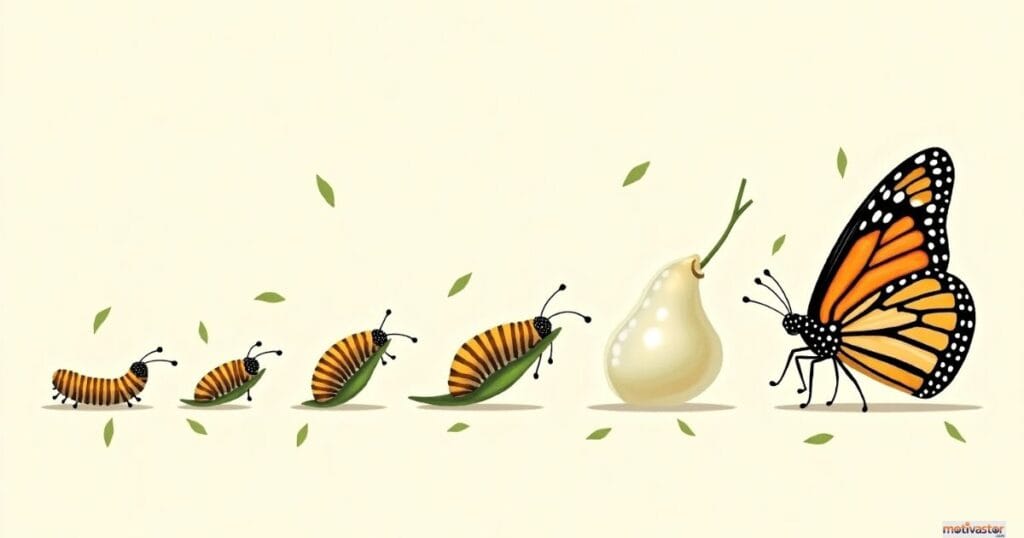Hey there.
Let’s talk for a second. Just you and me.
Have you ever had one of those days? The kind where you’re staring at a screen, a project, a problem—and you feel an invisible wall slam down in front of you. Your brain just… stops. A quiet, insidious voice whispers from the back of your mind:
“You can’t do this.” “You’re not smart enough for this.” “You’re going to fail. Again.”
That voice. We all have it. It’s the ghost in our machine, the default security setting that kicks in whenever we venture outside our comfort zone. For years, I thought that voice was the truth. I thought my talents, my intelligence, my “knack” for things were like my height or eye color—a fixed lottery ticket I was handed at birth. Some things I was good at. Other things? Forget it. That wall was permanent.
What if I told you that voice is a liar?
Not a malicious liar, but a misguided one. It’s a relic of an old mental operating system trying to protect you—from failure, from embarrassment, from effort. But in its attempt to keep you safe, it keeps you small.
The idea that we can fundamentally upgrade this operating system—learning to see the world differently through powerful growth mindset examples—comes from the life-changing work of Stanford psychologist Carol Dweck. She identified two core mindsets that shape our reality: the fixed mindset and the growth mindset.
- A fixed mindset assumes our character, intelligence, and creative abilities are static givens. You either have it or you don’t.
- A growth mindset, on the other hand, thrives on challenge and sees failure not as evidence of unintelligence but as a heart-pounding stepping stone for growth and stretching our existing abilities.
Now, you’ve probably heard these terms before. They’re popular in business seminars and classrooms. But here’s what most articles don’t tell you: A growth mindset isn’t a cheerful affirmation you stick on your mirror. It’s not about “positive thinking.” It’s a gritty, moment-to-moment, conscious rewiring of your internal monologue. It’s a conversation you have with yourself when you’re hanging on by a thread.
This isn’t a listicle. This is a toolkit. We’re going to go deep into 15 specific, real-world scenarios. For each one, we’ll expose the fixed mindset thought, deconstruct why our brain defaults to it, and then hand you the powerful growth mindset reframe that will, quite literally, transform how you think, work, and live.
Ready to upgrade your software? Let’s begin.

Quick Summary
What’s Inside:
Unlock 15 real-life scenarios where a fixed mindset can hold you back—and discover the exact growth mindset reframes and action steps to help you break through mental barriers, embrace challenges, and unlock your potential.
Key Takeaways:
- Reframe self-limiting beliefs like “I’m just not a ___ person” into opportunities for growth and learning.
- Turn setbacks, mistakes, and failures into valuable lessons and stepping stones for success.
- Transform your response to criticism, rejection, and feedback into fuel for improvement.
- Shift from comparison and jealousy to inspiration, collaboration, and abundance.
- Redefine your personal identity by seeing habits and behaviors as changeable, not fixed.
- Apply 3 actionable steps to start building your own growth mindset today.
Who This Is For:
Anyone who wants to overcome self-doubt, build resilience, and develop a mindset that thrives on learning, effort, and continuous improvement—at work, in school, or in life.
How to Use This Guide:
For each example, you’ll find the fixed mindset default, the growth mindset reframe, a deep dive into why it matters, and a practical action step you can apply right away.
The Mindset Shift: 15 Growth Mindset Examples in Action
Part A: The Arena of Challenges & Learning
This is where the battle is most often fought—when we’re faced with something new, difficult, or intimidating.

1. The “I’m Just Not a…” Trap
- The Fixed Mindset Default: “I’m just not a math person.” (Or “a public speaker,” “a creative type,” “a natural leader.”)
- The Growth Mindset Reframe: “I’m new to this type of math, and it’s a skill I can develop. What’s a strategy I haven’t tried yet?”
The Deep Dive:
The “I’m just not a…” statement is one of the most self-limiting phrases in the human language. It’s a get-out-of-jail-free card for our ego. By labeling ourselves, we give ourselves permission not to try. If we’re “not a math person” and we fail a test, it doesn’t hurt as much. It just confirms our pre-existing identity. See? I was right all along!
But here’s the truth: “Math person” isn’t a species of human. “Public speaking” isn’t a magical talent bestowed by the gods. They are skills. They are intricate webs of smaller, learnable skills. A great public speaker learned how to manage their breathing, structure a story, make eye contact, and practice their delivery. A “math person” learned how to break down problems, recognize patterns, and persist through frustration.
Your Action: The next time you hear yourself say, “I’m not a [blank] person,” stop. Challenge it. Rephrase it as: “I currently have limited experience in [blank].” This small change shifts the identity from something you are to something you do. And anything you do, you can get better at. What’s the very first, smallest step you could take to gain a tiny bit more experience? Watch a 5-minute YouTube tutorial? Read one article? That’s how it starts.
2. The Wall of Difficulty
- The Fixed Mindset Default: “This is too hard. I give up.”
- The Growth Mindset Reframe: “This is challenging, which means my brain is firing on all cylinders and creating new connections. This feeling isn’t a stop sign; it’s the feeling of growth.”
The Deep Dive:
Our brains are wired for efficiency. When something is hard, it consumes a lot of glucose (brain fuel). The fixed mindset interprets this friction as a warning: DANGER! You’re out of your depth! Abort mission! It wants to retreat to the comfort of the known, where things are easy.
A growth mindset, however, learns to love that feeling of friction. It re-labels “This is hard” as “This is where the magic happens.” Neuroscientists call this neuroplasticity—the brain’s ability to form new neural pathways. That feeling of strain and struggle? That’s the feeling of your brain physically rewiring itself to become stronger, faster, and smarter. It’s the mental equivalent of a muscle burning during a workout. You wouldn’t stop a bicep curl just because your muscle started to burn; you know that’s the signal it’s working.
Your Action: Reframe the sensation. When your head starts to hurt from thinking so hard, smile. Seriously. Say to yourself, “Ah, there it is. That’s the feeling of getting smarter.” This metacognitive trick changes your relationship with difficulty forever. It becomes a feeling you seek out, not one you run from.
3. The Effort Myth
- The Fixed Mindset Default: “If I have to try this hard, I must not be very good at it.”
- The Growth Mindset Reframe: “Effort is the mechanism that turns a novice into a master. Every expert I admire put in thousands of hours of this exact kind of effort.”
The Deep Dive:
This is a subtle but devastating belief. Our culture romanticizes the “natural.” We love stories of the prodigy, the overnight success, the genius who just gets it. This creates a toxic myth that if you’re truly talented, it should be easy. Effort becomes a sign of weakness, a signal that you’re an imposter.
The growth mindset flips this script entirely. It understands that effort isn’t a sign of a lack of ability; it’s the cause of ability. Michael Jordan was famous for out-working everyone on his team. Beyoncé rehearses relentlessly. “The ‘effortless’ performance you admire is the result of a thousand hours of focused, deliberate practice that you never saw.”
Your Action: Start celebrating the process, not just the outcome. After a long study session or a tough project, don’t just focus on whether you “finished” or “succeeded.” Take a moment to acknowledge the work itself. Say, “I put in three solid hours of focused effort today. That’s a win.” By praising the effort, you reinforce the behavior that actually leads to results.

Part B: The Fallout Zone – Setbacks & Failure
How you handle failure is perhaps the single greatest indicator of your long-term success.

4. The Mistake Hangover
- The Fixed Mindset Default: “I can’t believe I made that stupid mistake. I’m such an idiot.”
- The Growth Mindset Reframe: “Okay, a mistake happened. It’s not a reflection of my intelligence, but a piece of data. What can I learn from this, and what system can I create to prevent it next time?”
The Deep Dive:
In a fixed mindset, your performance is a direct reflection of your worth. A mistake isn’t just a wrong action; it’s a verdict on your character. “I did a dumb thing” quickly becomes “I am dumb.” This shame spiral is paralyzing. It makes you want to hide the mistake, blame others, or just ruminate on it for days.
A growth mindset separates your identity from your actions. A mistake is an event, not a person. It’s a data point. What does this data tell you? Maybe you rushed. Maybe you didn’t understand the instructions. Maybe you need a checklist. The goal isn’t to beat yourself up; the goal is to extract the lesson. The mistake is the tuition you pay for a valuable education.
Your Action: Implement the “What/Why/How” protocol. When you make a mistake, grab a piece of paper and write down the answers to these three questions:
- What exactly happened, without judgment? (e.g., “I sent the email to the wrong client.”)
- Why did it happen? (e.g., “I was multitasking and didn’t double-check the ‘To’ field.”)
- How will I prevent it from happening again? (e.g., “From now on, I will always check the recipient list as the very last step before hitting send.”) This turns shame into a system.
5. When the Whole Thing Crumbles
- The Fixed Mindset Default: “My project failed. This was a complete waste of time.”
- The Growth Mindset Reframe: “This version of the project didn’t work. I’ve just discovered one way not to build it, which is incredibly valuable information. Time to pivot and build version 2.0.”
The Deep Dive:
Thomas Edison famously said, “I have not failed. I’ve just found 10,000 ways that won’t work.” That is the growth mindset in its purest form. A fixed mindset sees outcomes as binary: success or failure. If the desired outcome isn’t achieved, the entire endeavor is labeled a “failure” and tossed in the mental garbage. All the time, effort, and resources are considered wasted.
A growth mindset sees a spectrum. It sees learning. No experiment is a waste of time if you learn something from it. Startups don’t “fail”; they “pivot.” Scientists don’t “fail”; they gather data that disproves a hypothesis. You didn’t “fail”; you ran a test that gave you a clear result.
Your Action: Redefine “failure.” Start calling these events “experiments.” “My experiment in launching that product line gave me the data that the market isn’t ready for it.” Doesn’t that sound more powerful? It shifts you from the role of a victim to the role of a scientist. You’re no longer failing; you’re gathering intelligence.
6. The Grip of Discouragement
- The Fixed Mindset Default: “I’ll never get this right.”
- The Growth Mindset Reframe: “I haven’t mastered this yet.”
The Deep Dive:
“Never” is a fixed-mindset word. It’s a permanent state, a closed door. It creates a sense of hopelessness that drains your motivation to continue.
Carol Dweck calls the reframe—adding the word “yet”—the “power of yet.” It’s the simplest, most profound mindset hack there is. “I’m not good at this” is a judgment. “I’m not good at this yet” is a statement of fact on a timeline of progress. It implies that the story isn’t over. It acknowledges the current reality (it’s a struggle) while holding open the door to a future possibility.
Your Action: Literally start adding “yet” to the end of your self-critical sentences. It feels cheesy at first, but it’s a cognitive-behavioral therapy technique that works. It trains your brain to see your skills and struggles as being on a continuum, not at a dead end. “I don’t understand this chapter… yet.” “I haven’t figured out how to solve this problem… yet.”
Part C: The Gauntlet of Feedback & Criticism
Nothing triggers a fixed mindset faster than feeling judged by others.

7. When Someone Critiques Your “Baby”
- The Fixed Mindset Default: “They’re attacking my work. They must think I’m incompetent.”
- The Growth Mindset Reframe: “This feedback is a gift. They are offering me a perspective I don’t have, which can help me see my blind spots and make my work even stronger.”
The Deep Dive:
When you pour your heart and soul into something, it feels like an extension of you. So when someone criticizes it, it feels personal. The fixed mindset’s immediate reaction is defensiveness. Its job is to protect your ego and your sense of competence. You might find yourself making excuses, blaming external factors, or dismissing the person giving the feedback (“What do they know, anyway?”).
The growth mindset performs a crucial uncoupling: The work is not you. The feedback is on the product, not the person. Someone pointing out a typo in your report isn’t calling you stupid; they’re helping you make the report better. Someone suggesting a change to your strategy isn’t saying your idea is bad; they are collaborating with you to find the best idea.
Your Action: Before responding to feedback, take a breath and say to yourself, “This is about the work, not about me.” Then, approach the feedback with curiosity instead of defensiveness. Ask clarifying questions: “That’s an interesting point. Can you tell me more about what you mean by that?” “What would be your suggestion for how to improve that section?” This turns a potential confrontation into a collaborative problem-solving session.
8. The Sting of Rejection
- The Fixed Mindset Default: “I got rejected for the job. They didn’t want me.”
- The Growth Mindset Reframe: “This particular opportunity wasn’t the right fit at this time. What can I learn from the process? What skills can I strengthen to be an even better candidate for the next one?”
The Deep Dive:
Rejection is brutal. It feels like a final verdict from the universe. A fixed mindset internalizes it completely. “They rejected my application” becomes “They rejected me.” This can lead to giving up on the goal altogether. “Well, I guess I’m just not cut out for that industry.”
A growth mindset depersonalizes it. It wasn’t “me” they rejected; it was a snapshot of me—my resume, my interview performance on one specific day. It’s a data point about market fit. Maybe they needed someone with more experience in a specific software. Maybe another candidate had a stronger internal referral. It’s not a judgment on your total worth. The most successful people are often the ones who have been rejected the most. They just didn’t let the rejection be the end of the story.
Your Action: After a rejection, perform a “rejection autopsy.” Don’t dwell on the pain. Instead, analyze the process. Where did you feel strongest? Where did you feel you could have prepared better? Did the interview questions reveal a skill gap you could work on? Use the rejection as a free, personalized study guide for your next application.
9. The “I Don’t Need Help” Shield
- The Fixed Mindset Default: “Asking for help is a sign of weakness. It proves I can’t do it myself.”
- The Growth Mindset Reframe: “Asking for help is a sign of strength and resourcefulness. It shows I’m committed to the goal more than my ego. It’s the fastest way to learn.”
The Deep Dive:
The fixed mindset wants to project an aura of effortless competence. Asking for help shatters that illusion. It’s a public admission of a gap in your knowledge or ability, which feels terrifying. So, we struggle in silence, wasting hours trying to reinvent a wheel that someone down the hall could have explained to us in five minutes.
The growth mindset is obsessed with one thing: growth. And it knows that the fastest path to growth is leveraging the knowledge of others. It sees asking for help not as a weakness, but as a strategic tool—a shortcut. Why spend ten hours struggling alone when a 15-minute conversation could get you unstuck? The most successful people are constantly asking questions and learning from others. They have mentors, coaches, and mastermind groups. They know that their own perspective is limited.
Your Action: Reframe “asking for help” as “gathering intelligence.” Identify one thing you’re currently stuck on. Now, identify one person who probably knows how to solve it. Draft a very specific, respectful question. “Hey [Name], I know you’re great at Excel. I’m trying to create a pivot table to analyze this sales data and I’m stuck. Would you have 5 minutes to show me how you’d approach it?” People generally love to share their expertise, and you’ll learn in minutes what could have taken you hours.
Part D: Through the Eyes of Others
Our mindset doesn’t just affect how we see ourselves; it drastically affects how we view the world around us.

10. When Someone Else Shines
- The Fixed Mindset Default: “Their success makes me feel insecure and threatened. It highlights what I’m lacking.”
- The Growth Mindset Reframe: “Their success is so inspiring! It’s proof that this is possible. What can I learn from their journey, their strategies, and their work ethic?”
The Deep Dive:
In a fixed-mindset world, success is a zero-sum game. If someone else gets a big piece of the pie, that means there’s less pie for you. Their success feels like a direct comparison that you lose. This breeds jealousy, resentment, and a feeling of scarcity.
A growth mindset sees the world as a place of abundant opportunity. Someone else’s success doesn’t diminish you; it illuminates a path. They’ve provided a blueprint! Instead of feeling threatened, you can feel inspired. Instead of jealousy, you can feel curiosity. They have demystified the process. Their success is a gift of information.
Your Action: The next time you feel a pang of jealousy, use it as a trigger. Immediately ask yourself three questions:
- What specifically about their success am I drawn to?
- What observable steps did they take to get there?
- What is one small thing I can do today to start moving in a similar direction? This transforms a negative emotion into a positive, actionable plan.
11. The “Natural Talent” Illusion
- The Fixed Mindset Default: “Wow, they’re a natural. I could never be that good.”
- The Growth Mindset Reframe: “Wow, they are highly skilled. I can only imagine the incredible amount of focused practice and dedication they must have put in to get to that level. It’s amazing what’s possible.”
The Deep Dive:
Calling someone a “natural” is a subtle way of letting ourselves off the hook. If their skill is an innate gift, then we don’t have to feel bad about not having it. It absolves us of the responsibility to try. But it’s also a disservice to the person we’re admiring. It erases the thousands of hours of sweat, frustration, and deliberate practice they invested.
A growth mindset looks past the polished final performance and respects the hidden process. It sees the iceberg—we admire the 10% above the water but a growth mindset respects the 90% of hard work hidden below. This view is empowering because if their skill is the result of a process, then it’s a process we, too, can undertake.
Your Action: Stop using the word “talent” or “natural.” Start using the word “skill.” It’s a small but powerful linguistic shift. “She’s not a talented writer; she has a highly developed writing skill.” This reminds your brain that greatness is built, not born.
12. The Collaborative Mind
- The Fixed Mindset Default: “I need to compete with my teammates to prove I’m the best.”
- The Growth Mindset Reframe: “We can achieve so much more together. How can I help my teammates succeed, and how can we leverage each other’s strengths?”
The Deep Dive:
The fixed mindset operates in “comparison mode.” It’s constantly ranking itself against others. In a team setting, this can be toxic. It leads to hoarding information, taking credit, and viewing colleagues as rivals.
The growth mindset operates in “collaboration mode.” It understands that a rising tide lifts all boats. It knows that the collective intelligence of a diverse team is far greater than that of any single individual. It asks, “How can we make the pie bigger?” not “How can I get the biggest slice?” This person shares resources, celebrates others’ wins, and actively seeks to help others. Ironically, this behavior is what makes them an invaluable team member and a natural leader—the very thing the fixed mindset craved but couldn’t achieve.
Your Action: In your next team meeting, set a private goal: to publicly acknowledge and build upon someone else’s idea. Say something like, “I love Sarah’s point about customer retention. To build on that, what if we also…” This demonstrates that you’re listening, you value others’ contributions, and you’re focused on the collective goal.
Part E: The Core of You – Personal Identity
This is the deepest level—how your mindset shapes your very sense of self.

13. The Limits of Potential
- The Fixed Mindset Default: “I’m too old to learn that.” or “I’ve probably reached my peak.”
- The Growth Mindset Reframe: “My brain is a dynamic organ that can learn new things at any age. I don’t know what my ultimate potential is, and I’m excited to find out.”
The Deep Dive:
A fixed mindset believes in an invisible ceiling. At some point, you just “are what you are.” This belief is self-fulfilling. If you believe you can’t learn something new, you won’t try, and thus you won’t learn.
A growth mindset is fueled by the science of neuroplasticity. The brain is not a static object; it is more like a muscle. It can grow, change, and adapt throughout your entire life. There is no predetermined “peak.” Your potential is not a known quantity. It is an unknown, exciting territory to be explored.
Your Action: Pick one small, novel skill you’ve always told yourself you were “too old” or “not the right type” to learn. It could be learning three chords on a guitar, how to identify five types of birds, or the basics of a new language on Duolingo. Spend just 10 minutes a day on it for two weeks. The goal isn’t mastery. The goal is to prove to yourself that your brain can still forge new paths.
14. The Fear of Looking Foolish
- The Fixed Mindset Default: “I’m not going to try that new thing. I’ll probably look stupid.”
- The Growth Mindset Reframe: “Every single expert was once a beginner. Embracing the awkward, clumsy feeling of being a beginner is the non-negotiable price of admission for learning anything cool.”
The Deep Dive:
The fixed mindset is obsessed with looking smart and competent at all times. The state of being a beginner—where you are by definition incompetent—is therefore terrifying. The fear of judgment, of looking foolish, is so strong that it prevents you from even starting.
The growth mindset normalizes and even celebrates the beginner phase. It knows you have to be willing to look a little stupid to eventually look brilliant. It embraces the mantra “suck at something new.” It’s okay to fall the first time you snowboard. It’s okay for your first painting to be a mess. It’s not just okay; it’s necessary.
Your Action: Intentionally do something you’re not good at, and do it with a sense of humor and curiosity. Go to a dance class, try pottery, attend a coding workshop. Give yourself permission to be the worst person in the room. The goal is to build your “vulnerability muscle” and disconnect your self-worth from your performance.
15. The Final Boss: “This Is Just Who I Am”
- The Fixed Mindset Default: “I have a short temper. That’s just who I am.” (Or “I’m a procrastinator,” “I’m disorganized.”)
- The Growth Mindset Reframe: “That’s a behavior pattern I’ve developed, not my fundamental identity. My habits and beliefs created this pattern, which means I have the power to create a new one.”
The Deep Dive:
This is the ultimate fixed-mindset trap. We fuse our behaviors with our identity. By saying “I am a procrastinator,” we make it a core, unchangeable part of our being. It’s no longer something we do; it’s something we are. And how can you change who you are?
A growth mindset understands that your identity is not a stone sculpture; it’s a river. It’s shaped by the banks of your habits, your thoughts, and your beliefs. If you change your habits, you change the course of the river. You are not a “procrastinator.” You are a person who has a habit of procrastinating, likely as a coping mechanism for anxiety or fear of failure. By addressing the underlying habit and the thought patterns, you can change the behavior.
Your Action: Take one of your “I am…” labels and rephrase it as an “I sometimes do…” statement.
- “I am disorganized” becomes “I have a habit of not putting things away immediately.”
- “I am bad with names” becomes “I haven’t practiced the skill of connecting names to faces.” This seemingly small change is monumental. It turns a fixed identity into a changeable behavior. And a behavior is something you have 100% control over.
How to Cultivate Your Growth Mindset: 3 Actionable Steps

Alright, we’ve just journeyed through 15 different mental landscapes. We’ve seen the barren, dead-end roads of the fixed mindset and the vibrant, expanding trails of the growth mindset.
Seeing the map is one thing. Learning to navigate the terrain yourself is another.
It can feel overwhelming. “Okay,” you might be thinking, “so I have to change my entire way of thinking?”
Yes and no.
You don’t change it all at once… You do it by building small, new mental habits. While the three steps below are a fantastic start, we’ve created a more in-depth guide with 7 growth mindset activities for adults to help you build an unshakeable practice.
1. Wield the Power of One Tiny Word: “Yet”
Let’s be honest. We all have that voice. The one that delivers a verdict with the speed and finality of a judge’s gavel.
“I don’t understand this.” “I’m not good at this.” “I haven’t figured it out.”
These sentences feel like closed doors. They are statements of permanent fact. But what if you had a skeleton key that could unlock any one of them?
That key is the word “yet.”
It sounds almost comically simple, doesn’t it? But watch what happens when you add it.
“I don’t understand this… yet.” “I’m not good at this… yet.” “I haven’t figured it out… yet.”
Feel that? The door just creaked open. A statement of fact has transformed into a statement of progress. You’ve just placed yourself on a timeline, acknowledging that where you are right now is not where you will be forever. You’ve given your brain a story to believe in—a story of a journey, not a dead end.
Your Action: Become a “Yet” Detective. For the next 48 hours, your only job is to listen. Listen to your own self-talk and to the language of people around you. Every time you hear a self-limiting statement, silently add “yet” to the end of it in your mind. Don’t try to fix anything else. Just notice how that one tiny word changes the entire emotional energy of the thought. This practice alone will begin to retrain your brain to see possibilities instead of roadblocks.
2. Fall in Love with the Process, Not Just the Podium
Our culture is obsessed with the finish line. The promotion, the final grade, the sold-out product, the number on the scale. We celebrate the moment the hero gets the trophy, but we forget the most important part of the story: the training montage.
The montage—the sweat, the failed attempts, the early mornings, the messy drafts—is where the hero is actually forged. The trophy is just the proof.
A fixed mindset lives for the trophy. Its happiness is entirely dependent on a specific outcome. If it doesn’t get the A+, the whole semester was a waste. This is an incredibly fragile way to live.
A growth mindset learns to fall in love with the montage. It learns to find satisfaction in the process. It celebrates the effort, the strategy, the learning, the sheer act of showing up.
Why is this so powerful? Because you have 100% control over the process. You don’t have total control over the outcome—luck, timing, and other people play a role. But you do have control over whether you put in an hour of focused work. You have control over trying a new strategy after the first one failed. When you start celebrating the process, you can feel successful and motivated every single day, not just on the rare days you get a trophy.
Your Action: Keep a “Process Journal.” Get a notebook or open a new document. At the end of each day, write down just one thing you did that was part of a process. Do not write about the outcome.
- Instead of: “I didn’t finish the report.”
- Write: “I spent one hour of deep, focused work on the difficult data analysis section.”
- Instead of: “My workout felt terrible.”
- Write: “I showed up to the gym even when I didn’t feel like it. That’s a win for discipline.”
This practice will surgically detach your sense of accomplishment from unpredictable outcomes and reattach it to your own effort and resilience—the things that actually create growth.
3. Become the DJ of Your Inner Monologue
Imagine there’s a radio station playing in your head 24/7. For many of us, that station is stuck on a default channel: “Radio F.E.A.R.” (False Evidence Appearing Real). It plays all the greatest hits: “You’re Going to Fail,” “Everyone’s Judging You,” and the classic, “You’re Not Good Enough.”
A fixed mindset believes you can’t change the station. It’s just background noise you have to live with. A growth mindset knows you are the DJ. You can’t just turn the radio off—suppressing thoughts never works—but you can consciously choose to fade out one track and fade in another. This is the art of the reframe.
This is a deliberate, three-step practice.
Your Action: Use the “Notice, Reframe, Practice” Method.
- Notice & Name It. The moment you feel that familiar pang of anxiety or self-doubt, stop. Don’t fight it. Just notice the thought. Say to yourself, “Ah, there it is. That’s my ‘I’m an idiot for making that mistake’ track playing.” Naming the thought separates you from it. You are not the thought; you are the one noticing the thought.
- Challenge it with a Reframe. Ask yourself: “What would the most compassionate, growth-oriented version of me say right now?” Consult the 15 examples. Find the reframe that fits. The thought “I’m an idiot for making that mistake” can be challenged with the truer, more useful thought: “This mistake is not a measure of my intelligence. It’s an opportunity to learn.”
- Practice the New Track. Say the new thought out loud. Write it down. Repeat it. At first, it will feel fake. You’re trying to play a new song on a station that’s been broadcasting the same hits for years. But every time you consciously practice the new thought, you are carving a new neural groove. You’re telling your brain, “This is the new station we listen to now.”
Over time, the new station becomes the default. The voice of growth becomes louder, clearer, and more automatic than the voice of fear. And that, right there, is how you truly transform how you think.
Frequently Asked Questions (FAQs)
What is the difference between a growth mindset and positive thinking?
A growth mindset is about embracing challenges and seeing effort as the path to mastery, while positive thinking is a more general focus on being optimistic. A growth mindset is action-oriented and accepts that the process may be difficult, whereas positive thinking can sometimes involve avoiding or downplaying difficulties.
Can a person have a fixed mindset in one area and a growth mindset in another?
Yes, absolutely. This is very common. Someone might have a strong growth mindset about their physical fitness, believing they can get stronger with effort, but have a fixed mindset about their artistic abilities, believing they “just aren’t creative.” The goal is to identify those fixed areas and consciously apply growth principles to them.
How long does it take to develop a growth mindset?
Developing a growth mindset is an ongoing practice, not a destination with a deadline. You can start seeing small changes in your perspective immediately by applying simple reframes, like adding the word “yet” to your thoughts. Significant, lasting change comes from consistently choosing growth-oriented responses over weeks and months.
What is the simplest way to start practicing a growth mindset today?
The simplest way is to catch your own fixed-mindset thoughts. When you hear yourself think, “I can’t do this,” consciously rephrase it to, “I can’t do this yet. What’s the first small step I can take?” This single change from a permanent statement to a temporary one opens the door to learning and progress.
Is a growth mindset just about praising effort, no matter the result?
Not exactly. While praising effort is important, a true growth mindset is about praising effective effort and learning strategies. It’s not just about “trying hard” but about trying hard smartly. If a strategy isn’t working, a person with a growth mindset doesn’t just try harder with the same failed approach; they seek feedback, analyze what went wrong, and adapt their strategy for the next attempt. The focus is on progress and learning from both successes and failures.

The Journey, Not the Destination
If you’ve made it this far, I hope you feel a little spark. A sense that the walls aren’t as solid as you thought.
Developing a growth mindset isn’t a switch you flip once. It’s a daily practice. It’s a thousand tiny corrections. It’s the conscious choice, in a moment of frustration, to choose curiosity over despair. It’s the willingness to whisper “…yet” when you feel like screaming “never.”
This isn’t about ignoring reality or pretending everything is easy. It’s about facing reality with a different toolkit. It’s about understanding that the effort, the struggle, the mistakes, and the feedback are not obstacles on your path—they are the path.
Your journey starts now. Embracing a growth mindset is a continuous practice, not a destination… For a dose of daily inspiration on this journey, we’ve also curated a collection of over 130 of the best growth mindset quotes.
So, take a step.
Now, I want to hear from you. Which of these 15 examples hit you the hardest? What’s one fixed-mindset thought you’re going to challenge this week? Share it in the comments below. Your story might just be the spark someone else needs to start their own journey.


3 thoughts on “15 Powerful Growth Mindset Examples That Will Transform How You Think”